Advertisements
Online Mock Tests
Chapters
2: Microorganisms : Friend and Foe
3: Synthetic Fibres and Plastics
4: Materials : Metals and Non-Metals
5: Coal and Petroleum
6: Combustion and Flame
7: Conservation of Plants and Animals
8: Cell—Structure and Functions
9: Reproduction in Animals
10: Reaching the Age of Adolescence
11: Force
12: Friction
13: Sound
14: Chemical Effects of Electric Current
15: Some Natural Phenomena
▶ 16: Light
17: Stars and Solar System
18: Pollution of Air and Water
![NCERT Exemplar solutions for Science [English] Class 8 chapter 16 - Light NCERT Exemplar solutions for Science [English] Class 8 chapter 16 - Light - Shaalaa.com](/images/science-english-class-8_6:5f2b1b2038084cf381bfa42c826a928c.jpg)
Advertisements
Solutions for Chapter 16: Light
Below listed, you can find solutions for Chapter 16 of CBSE NCERT Exemplar for Science [English] Class 8.
NCERT Exemplar solutions for Science [English] Class 8 16 Light Multiple Choice Questions [Pages 91 - 93]
Part of the eye which controls the entering of light is called
iris
cornea
lens
retina
We can see a non-luminous object when the light
emitted by the object falls on the eye
is reflected from the object towards our eye
completely passes through the object
gets completely absorbed by the object
Light is falling on surfaces S1 S2 and S3 as shown in the figure.
|
Surface S1 |
|
Surface S2 |
|
Surface S3 |
Surfaces on which the angle of incidence is equal to the angle of reflection is/are
Only S1
S1 and S2
S2 and S3
All the three surfaces
A tiny mirror M is fixed on a piece of cardboard placed on a table. The cardboard is illuminated by light from a bulb. The position of eye with respect to position of bulb is shown in the figure as A, B, C and D. In which position mirror will be visible?
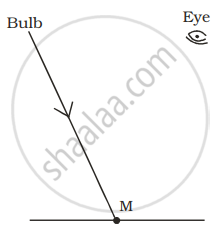 |
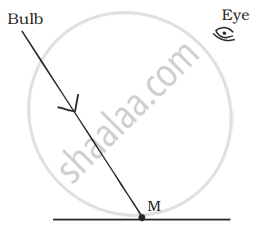 |
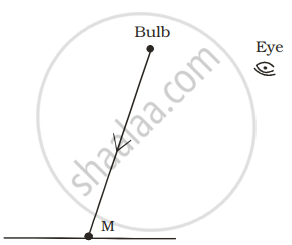 |
 |
| (A) | (B) | (C) | (D) |
A
B
C
D
A small hole P is made in a piece of cardboard. The hole is illuminated by a torch as shown in the figure. The pencil of light coming out of the hole falls on a mirror.
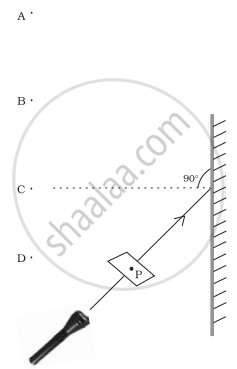
At which point should the eye be placed, so that the hole can be seen?
A
B
C
D
Two mirrors A and B are placed at right angles to each other as shown in the figure.
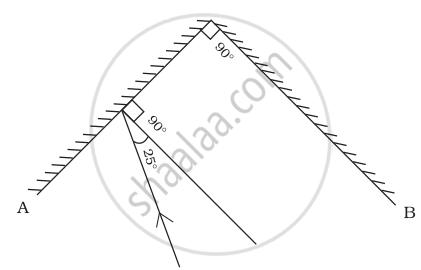
A ray of light incident on mirror A at an angle of 25° falls on mirror B after reflection. The angle of reflection for the ray reflected from mirror B would be
25°
50°
65°
115°
Which of the following statements is correct regarding rods and cones in the human eye?
Cones are sensitive to dim light.
Cones are sensitive to bright light
Rods are sensitive to bright light
Rods can sense colour
In the figure of the human eye, the cornea is represented by the letter

A
B
C
D
NCERT Exemplar solutions for Science [English] Class 8 16 Light Very Short Answer Questions [Pages 93 - 94]
Name the part of the eye which gives colour to the eyes.
Boojho while waving his hand very fast in front of his eyes, observes that his fingers appear blurred. What could be the reason for it?
How many times is a ray of light reflected by two plane mirrors placed parallel and facing each other?
The angle between incident ray and reflected ray is 60°. What is the value of angle of incidence? Given that, angle of incidence + angle of reflection = 60°.
The distance between the object and its image formed by a plane mirror appears to be 24 cm. What is the distance between the mirror and the object?
NCERT Exemplar solutions for Science [English] Class 8 16 Light Short Answer Questions [Pages 94 - 95]
What happens to light when it gets dispersed? Give an example.
Draw figure showing the position of the plane mirror. Also, label the angle of incidence and angle of reflection on it.

Look at the figure. Can the image of the child in it be obtained on a screen?

Eyes of the nocturnal birds have large cornea and a large pupil. How does this structure help them?
What kind of lens is there in our eyes? Where does it form the image of an object?
Which part of the eye gets affected if someone is suffering from cataract? How is it treated?
NCERT Exemplar solutions for Science [English] Class 8 16 Light Long Answer Questions [Pages 95 - 96]
Boojho planned an activity to observe an object A through pipes as shown in figure, so that he could see objects which he could not directly see.
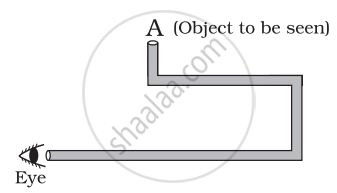
- How many mirrors should he use to see the objects?
- Indicate the positions of the mirrors in the figure.
- What must be the angle with respect to the incident light at which he should place the mirrors?
- Indicate the direction of rays in the figure.
- If any of the mirrors is removed, will he be able to see the objects?
There is a mistake in, each of the following ray diagrams given as fig. (a), (b), and (c). Make the necessary correction(s).
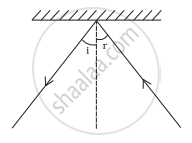 |
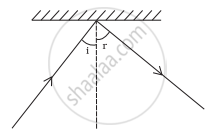 |
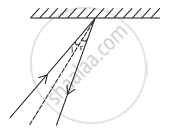 |
| (a) | (b) | (c) |
Explain the process which enables us to perceive motion in a cartoon film.
How is the phenomenon of reflection used in making a kaleidoscope? What are the applications of a kaleidoscope?
Figure shows the word REST written in two ways in front of a mirror. Show how the word would appear in the mirror.
 |
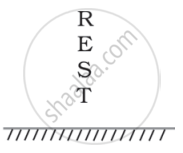 |
Write down the names of parts of the eye in the blank spaces shown in the figure.

Solutions for 16: Light
![NCERT Exemplar solutions for Science [English] Class 8 chapter 16 - Light NCERT Exemplar solutions for Science [English] Class 8 chapter 16 - Light - Shaalaa.com](/images/science-english-class-8_6:5f2b1b2038084cf381bfa42c826a928c.jpg)
NCERT Exemplar solutions for Science [English] Class 8 chapter 16 - Light
Shaalaa.com has the CBSE Mathematics Science [English] Class 8 CBSE solutions in a manner that help students grasp basic concepts better and faster. The detailed, step-by-step solutions will help you understand the concepts better and clarify any confusion. NCERT Exemplar solutions for Mathematics Science [English] Class 8 CBSE 16 (Light) include all questions with answers and detailed explanations. This will clear students' doubts about questions and improve their application skills while preparing for board exams.
Further, we at Shaalaa.com provide such solutions so students can prepare for written exams. NCERT Exemplar textbook solutions can be a core help for self-study and provide excellent self-help guidance for students.
Concepts covered in Science [English] Class 8 chapter 16 Light are Reflection of Light, Law of Reflection of Light, Light, Terms Used in Reflection of Light, Types of Reflection, Multiple Reflections, Prism, Dispersion of Light Through Prism and Formation of Spectrum, Human Eye, Care of the Eyes, Visual Impairment and Braille System.
Using NCERT Exemplar Science [English] Class 8 solutions Light exercise by students is an easy way to prepare for the exams, as they involve solutions arranged chapter-wise and also page-wise. The questions involved in NCERT Exemplar Solutions are essential questions that can be asked in the final exam. Maximum CBSE Science [English] Class 8 students prefer NCERT Exemplar Textbook Solutions to score more in exams.
Get the free view of Chapter 16, Light Science [English] Class 8 additional questions for Mathematics Science [English] Class 8 CBSE, and you can use Shaalaa.com to keep it handy for your exam preparation.



